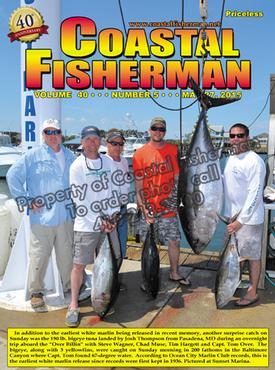


Article by Capt. Steve Katz
 What is AIS…
What is AIS…
Do I need it?
Automatic Identification System or more commonly referred to as AIS, is an electronic vessel tracking safety and collision avoidance system used both by land stations and other vessels. The AIS systems electronically exchange information about each transmitting vessel with other vessels in the nearby area – about a 20 mile range.
AIS signals are automatically broadcast digitally on the marine VHF frequency of 161.975 MHz and 162.025 MHz from the vessels AIS transmitter to all nearby AIS receivers. While AIS systems are mandatory for most commercial vessels, many recreational vessels have chosen to add this safety feature as well.
An AIS transmitter is comprised of a specific VHF /AIS antenna, a GPS receiver and a processor box. The processor box is programmed with the ships data, such as: vessel name, radio call sign, MMSI number, vessel type, vessel dimensions, GPS antenna location, etc. When in use, the AIS system will broadcast this data along with position, speed and heading information. The vessels receiving the AIS signal will “see” the transmitting vessel current position and informational data on their navigation chartplotter.
There is a technical and cost difference in the ability to receive AIS signals compared to the ability to broadcast AIS signals. Many recreational boaters have the ability to receive AIS signals but do not broadcast. This allows them to “see” other vessels, just like when using radar, AIS can see around the corner and can also “see” in rain and fog. As a recreational boater, knowing where the larger vessels are is a fantastic collision avoidance safety feature for you to use.
When using AIS data, you are able to see other vessels radio call sign or MMSI number, allowing you to contact the other vessels if needed. As we learned in the last few issues of this column, if we have the vessels MMSI number, we can make a direct call to their marine VHF radio. This feature is great in a situation where you need to contact another ships captain and let him know where you are. Using an AIS receiver is a little like spying; you can see and read about the boats around you but they do not know you are listening.
These AIS receivers are now reasonably priced and available as a built-in feature on some VHF radios. They are also available as a stand-alone hardware device. These stand-alone devices need to be connected to your chart plotter using NMEA 0183 or NMEA 2000. Stand-alone AIS receivers, relying on an existing chartplotter and sharing your VHF antenna begins at $250. VHF radios with built in AIS receiver and graphical display run about $400.
If you really want to be “seen” in the AIS environment, you will need to install an AIS transceiver. The cost of the hardware begins around $700 for a Class B transceiver. An AIS transceiver is required to have its own GPS antenna and should have its own AIS/VHF antenna for broadcasting and receiving. This AIS transceiver is available in two classes, Class A and Class B.
Class A vessels report their position autonomously every 2-10 seconds dependent on the vessel’s speed and/or course changes (every three minutes or less when at anchor or moored); and, the vessel’s static and voyage related information every 6 minutes. Class A stations are also capable of text messaging safety related information and AIS Application Specific Messages, such as meteorological and hydrological data, electronic Broadcast Notice to Mariners, and other marine safety information.
Class B vessels report every three minutes or less when at anchor or moored, but, their position is reported less often and at a lower power. Likewise, they report the vessel’s static data every 6 minutes, but, not any voyage related information.
Even if you only receive AIS, this Class A vs. Class B can make a big difference on how far away you receive data, the specific data your system receives and how often you receive it.
Now that we know a little about how it works, how can this be used in our everyday world? When properly connected, most chartplotters will show you a triangle on the chart plotter display representing the AIS vessel, along with more detailed information when you select that vessel. This information will help you determine if there is a possibility of collision with the AIS vessel if one of you does not change your course or speed.
I think one of the best features of installing a Class A or Class B transponder is that your vessel shows up on the large vessels navigation computers. This allows the big boat to know where you are and therefore, when needed, allows one of you to alter course to maintain safe separation of the vessels. One example where local anglers could benefit from an AIS transmitter is when you are fishing an overnighter offshore and a 600-foot freighter seems to have plotted its course directly through the canyon hotspot. Instead of wondering if the other captain sees you in the dark and you try to make radio contact, the AIS transceiver allows you to be very sure the other boat captain sees you on their electronic navigation system and is usually required to make contact to determine if they are going to alter course or stand-on.
An AIS system is a great, simple addition to your existing navigation equipment and an important navigation tool for collision avoidance.
Captain Steve Katz is the owner of Steve’s Marine Service and holds NMEA, AMEI and NMEA2000 certificates along with ABYC Master Technician certification and factory training from many manufacturers.